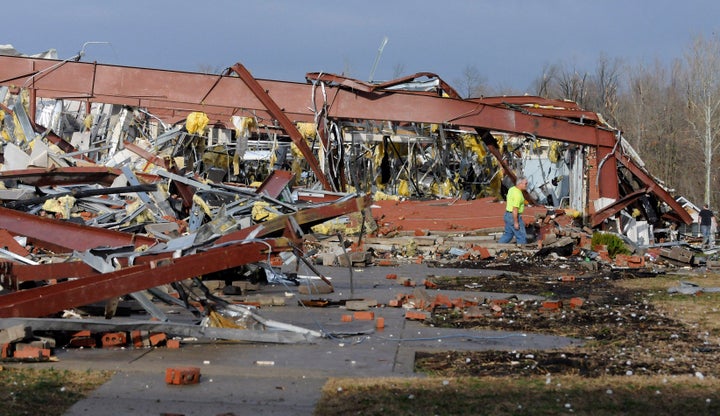
Are the several tornadoes that recently hit the United States an indication of what is to come? Perhaps 2012 will make the hurricanes, tornadoes, earthquakes, torrential rains, wildfires, and the record-breaking heat wave of 2011 seem ordinary. Were all the extreme weather occurrences of last year a product of global warming or just a coincidental string of events? I'm not a scientist but my interest in global warming has led me to do extensive research and meet with leading climatologists doing research in ozone depletion. Thus, I've become convinced that further investigation into global weather patterns could allow us to make better-informed predictions that ultimately save lives.
As a photographer that specializes in capturing the effects of ultraviolet light on the landscape, I seek locations in the world that have an abundance of ultraviolet light and as a result, I am extremely aware of the occurrence, prevalence, and abundance of ozone depletion. The ozone layer is located in the stratosphere and when it is depleted or begins to thin, it allows more ultraviolet light to pass through to the troposphere. This transaction causes the stratosphere to become much colder. With this stratospheric cooling, the differences in temperature between the stratosphere and the troposphere increase, thus causing an increase in stratospheric wind pattern-speed. This then affects wind patterns speed in the lower troposphere down to the surface of the earth.
Kirk Johnson's New York Times piece published last April, "Predicting Tornadoes: It's Still a Guessing Game," caused me to question the amount of research being considered when making such claims. Weather patterns that cause tornadoes could potentially be predicted if we took a discerning look at the global environment and honed in on such realities as the implications that ozone depletion in the Arctic and Antarctica have on our planet's overall temperature and climate. We should put greater emphasis on stratospheric conditions because, as evidenced, it might allow us to make predictions on global weather as opposed to playing a "guessing game."
For instance, in April of 2011, James Drummond and his team from Dalhousie University measured ozone levels at the PEARL station in Eureka, Canada. Ozone levels were reduced to 40 to 50 percent. During this time, high levels of ozone depletion also were registered in northern Finland. The ozone levels in the Arctic were the lowest ever recorded. Before this the highest depletion was at 30 percent. On April 28, a severe windstorm hit St. Catherine's, Ontario, which is located just above the area of the United States most affected by the tornadoes. It's important to note that at the same time, conditions in the United States just south of Ontario were ideal for tornadoes. Warm, humid air was coming up from the Gulf of Mexico, cooler dry air coming down from Canada. Could the extra colder air from stratospheric conditions have made the tornadoes more severe than expected?
In 2007, the NASA Goddard Institute for Space Studies predicted that there would be an increase in tornadoes due to an increase in global warming. Climate issues can no longer be isolated. These issues seem to be global with each part of the climate equation affecting the next.
Again, on Oct 23, 2011, a remarkable study using evidence-based research tying ozone depletion with surface climate change was published in Nature Geoscience; the study was authored by experts from around the globe that focus on global warming, climate change, and ozone depletion. It linked the stratospheric cold winds to affecting vertical wind sheer and surface climate. Could the severe ozone depletion in April in the Northern Hemisphere cause an increase in the intensity of the tornadoes through out the southern, midwestern and northeastern United States?
It seems irrational to write these varying occurrences off as coincidence. We might not be able to change global warming or our severe weather patterns but we should try and live with the possibility that these patterns occur. In the past decade, funding for ozone research has dwindled and many of the ozone research testing centers have closed. Now more than ever, our government needs to support research on climate studies including ozone research. If we pay attention to these studies, perhaps we could be forewarned and protect ourselves before a disaster occurs.
I am continuing to photograph areas of the world that have an abundance of UV light. Through my exploration, I will also be tracking ozone depletion. I hope that my photographs will encourage further discourse on ozone depletion and global warming issues.
Diane Tuft's photographic series, "Aftermath" will be exhibited at the Marlborough Gallery in New York City on March 20-April 21. Follow her updates on Facebook.